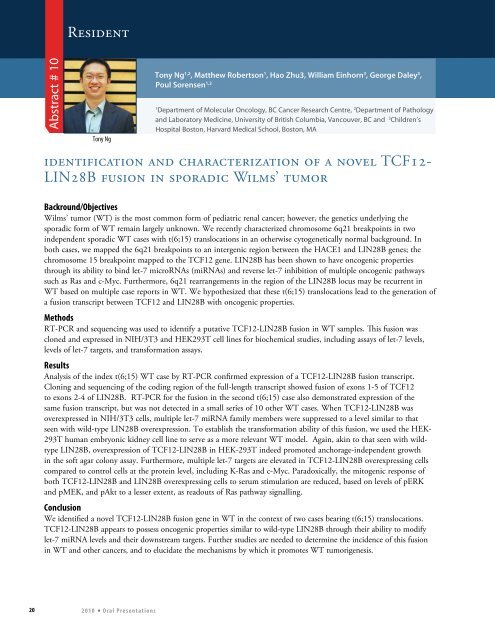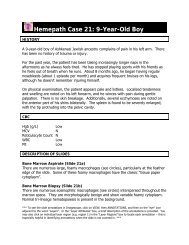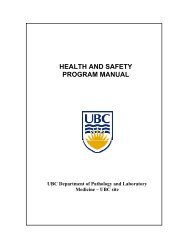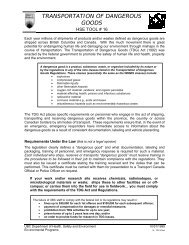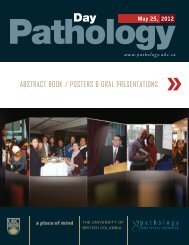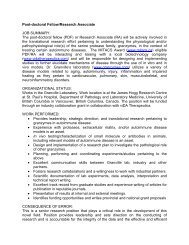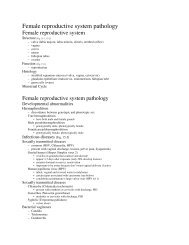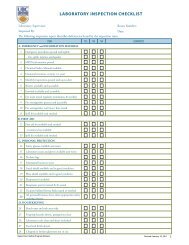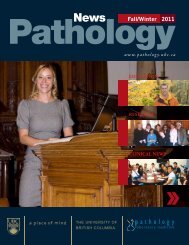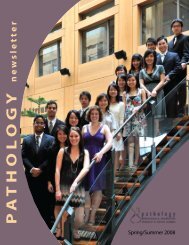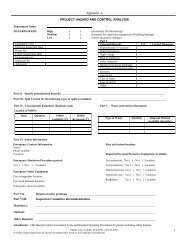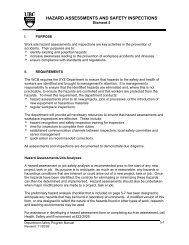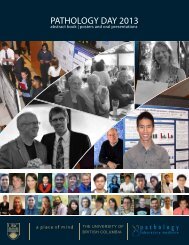Oral Presentations - Pathology and Laboratory Medicine - University ...
Oral Presentations - Pathology and Laboratory Medicine - University ...
Oral Presentations - Pathology and Laboratory Medicine - University ...
Create successful ePaper yourself
Turn your PDF publications into a flip-book with our unique Google optimized e-Paper software.
ResidentAbstract # 10Tony NgTony Ng 1,2 , Matthew Robertson 1 , Hao Zhu3, William Einhorn 3 , George Daley 3 ,Poul Sorensen 1,21Department of Molecular Oncology, BC Cancer Research Centre, 2 Department of <strong>Pathology</strong><strong>and</strong> <strong>Laboratory</strong> <strong>Medicine</strong>, <strong>University</strong> of British Columbia, Vancouver, BC <strong>and</strong> 3 Children’sHospital Boston, Harvard Medical School, Boston, MAidentification <strong>and</strong> characterization of a novel TCF12-LIN28B fusion in sporadic Wilms’ tumorBackround/ObjectivesWilms’ tumor (WT) is the most common form of pediatric renal cancer; however, the genetics underlying thesporadic form of WT remain largely unknown. We recently characterized chromosome 6q21 breakpoints in twoindependent sporadic WT cases with t(6;15) translocations in an otherwise cytogenetically normal background. Inboth cases, we mapped the 6q21 breakpoints to an intergenic region between the HACE1 <strong>and</strong> LIN28B genes; thechromosome 15 breakpoint mapped to the TCF12 gene. LIN28B has been shown to have oncogenic propertiesthrough its ability to bind let-7 microRNAs (miRNAs) <strong>and</strong> reverse let-7 inhibition of multiple oncogenic pathwayssuch as Ras <strong>and</strong> c-Myc. Furthermore, 6q21 rearrangements in the region of the LIN28B locus may be recurrent inWT based on multiple case reports in WT. We hypothesized that these t(6;15) translocations lead to the generation ofa fusion transcript between TCF12 <strong>and</strong> LIN28B with oncogenic properties.MethodsRT-PCR <strong>and</strong> sequencing was used to identify a putative TCF12-LIN28B fusion in WT samples. This fusion wascloned <strong>and</strong> expressed in NIH/3T3 <strong>and</strong> HEK293T cell lines for biochemical studies, including assays of let-7 levels,levels of let-7 targets, <strong>and</strong> transformation assays.ResultsAnalysis of the index t(6;15) WT case by RT-PCR confirmed expression of a TCF12-LIN28B fusion transcript.Cloning <strong>and</strong> sequencing of the coding region of the full-length transcript showed fusion of exons 1-5 of TCF12to exons 2-4 of LIN28B. RT-PCR for the fusion in the second t(6;15) case also demonstrated expression of thesame fusion transcript, but was not detected in a small series of 10 other WT cases. When TCF12-LIN28B wasoverexpressed in NIH/3T3 cells, multiple let-7 miRNA family members were suppressed to a level similar to thatseen with wild-type LIN28B overexpression. To establish the transformation ability of this fusion, we used the HEK-293T human embryonic kidney cell line to serve as a more relevant WT model. Again, akin to that seen with wildtypeLIN28B, overexpression of TCF12-LIN28B in HEK-293T indeed promoted anchorage-independent growthin the soft agar colony assay. Furthermore, multiple let-7 targets are elevated in TCF12-LIN28B overexpressing cellscompared to control cells at the protein level, including K-Ras <strong>and</strong> c-Myc. Paradoxically, the mitogenic response ofboth TCF12-LIN28B <strong>and</strong> LIN28B overexpressing cells to serum stimulation are reduced, based on levels of pERK<strong>and</strong> pMEK, <strong>and</strong> pAkt to a lesser extent, as readouts of Ras pathway signalling.ConclusionWe identified a novel TCF12-LIN28B fusion gene in WT in the context of two cases bearing t(6;15) translocations.TCF12-LIN28B appears to possess oncogenic properties similar to wild-type LIN28B through their ability to modifylet-7 miRNA levels <strong>and</strong> their downstream targets. Further studies are needed to determine the incidence of this fusionin WT <strong>and</strong> other cancers, <strong>and</strong> to elucidate the mechanisms by which it promotes WT tumorigenesis.20 2 0 1 0 * O r a l P r e s e n t a t i o n s


